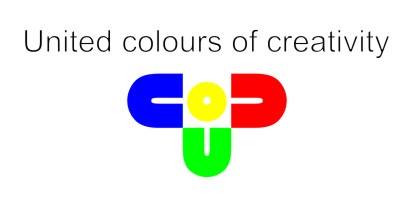

2014 -2016
The strategic partnership between European schools in this project is created in order to work out effective approaches to provide attractive integration learning experience for young people with disabilities and mainstream students, so that their key competences as well as tolerance towards different people would improve. The teachers participating in the project learn to deal with social, linguistic and cultural diversity, implement non-formal learning methods in formal education, develop professionally, support young people's creativity. The project consists of local activities including working out international modules for teaching certain art techniques non-formally in schools and short-term students' exchanges for learning experience.
The partnership institutions are Ahtme Kool and Narva Vanalinna Riigikool (Estonia), Agrupamento de Escolas Gardunha e Xisto (Portugal), Gimnazija Brezice (Slovenia), Centrul Scolar pentru Educatie Incluziva "Elena Doamna" (Romania), Zespol Szkol Specjalnych (Poland), Tarsus Mehmet Akif Ersoy Ortaokulu (Turkey). The associated partners are Elementary School Ana Gale Sevnica (Slovenia), Scoala gimnaziala nr 8 Alexandru Vlahuta (Romania) and Szkoła Podstawowa Nr 5 z Oddziałami Integracyjnymi im. Powstańców Śląskich w Wieluniu (Poland). The partnership involves both mainstream schools and schools for children with disabilities. The age of students in the target group is 12 -16.
Quantitative indicators:
1. 6 international integrated learning programmes worked out for the groups of students from partner countries
2. The students from partner institutions acquired knowledge in paper art, pantomime and puppet theatre, music performance, dancing, painting, plaster figures (every group of students - one technique)
3. 120 students took part in the international mobilities
4. 144 students took part in international learning programmes
4. One album and one USB with the project pictures and performances
5. A handbook with teachers' recommendations, methods and ideas that can be used in multicultural groups with diverse background (integration of formal and non-formal methods, CLIL, cross-curricula connections through arts, inclusive approach).
Qualitative indicators:
1. Students have developed their key competences, creativity, tolerance, team working skills (evidence: observations, interviews, feedback questionnaires, etc.)
2. The teachers know how to integrate non-formal methods into formal education and do that in their local or international work (evidence: survey after the project, feedback, sharing knowledge with colleague, etc.)
3. The project results are integrated into the school everyday activities; best practices of teaching arts and working with social, linguistic and cultural diversity in 6 countries are analysed and selected for implementation.
4. The project handbook is used by other stakeholders and receives positive feedback. The project ideas are implemented in further projects and schools' activities.
5. Art classes are better connected with other school subjects, so that the children can see how they can use knowledge from other subjects in arts and real life (responsibilities of teachers of art and music).
6. New international projects and initiatives (at least one) have appeared after the present cooperation experience. The target areas: inclusive programmes for mainstream and students with disabilities, integration of non-formal methods into formal teaching process, cross-curricula projects.
You can download our project book here:
